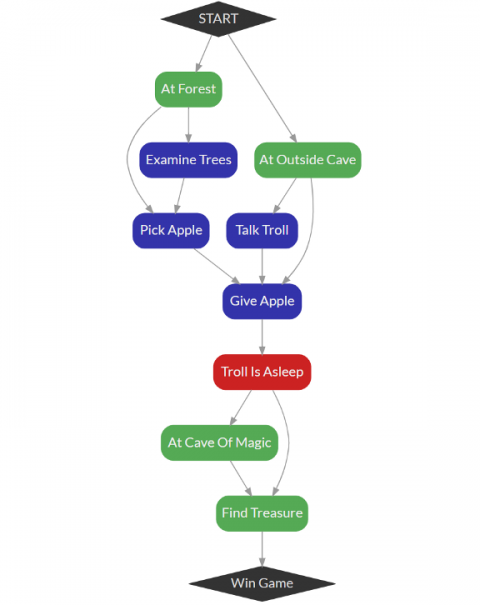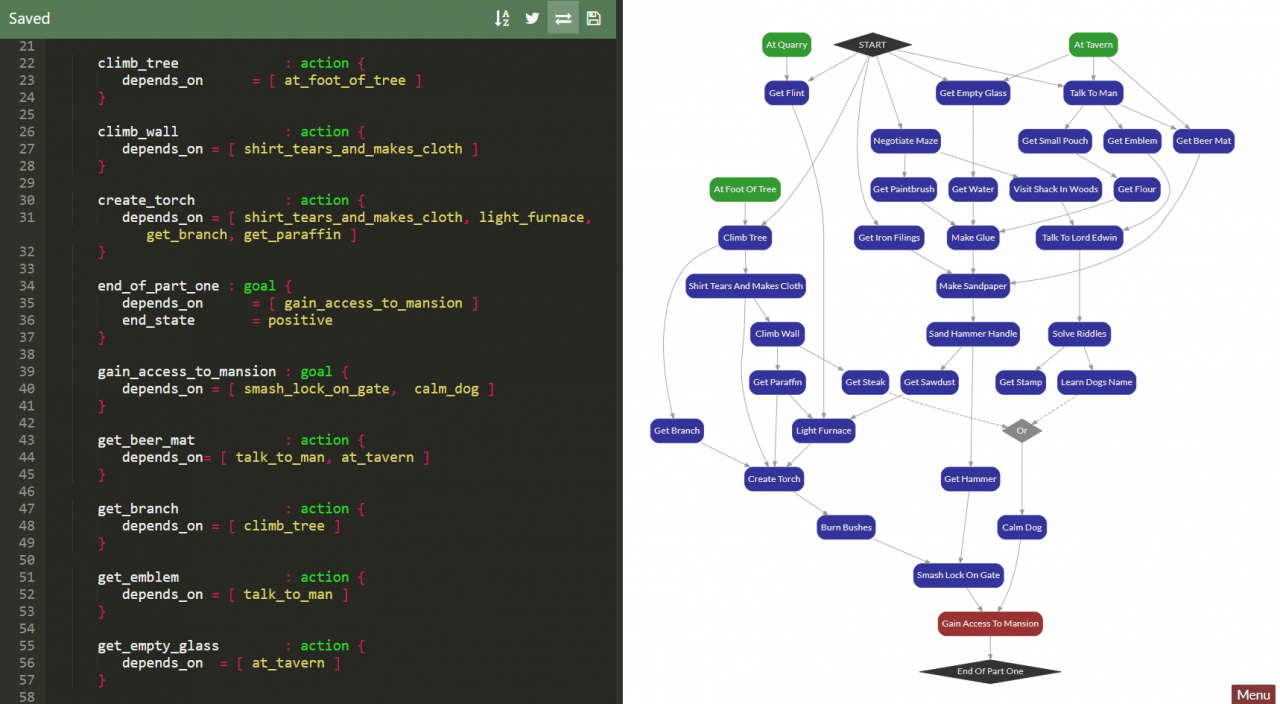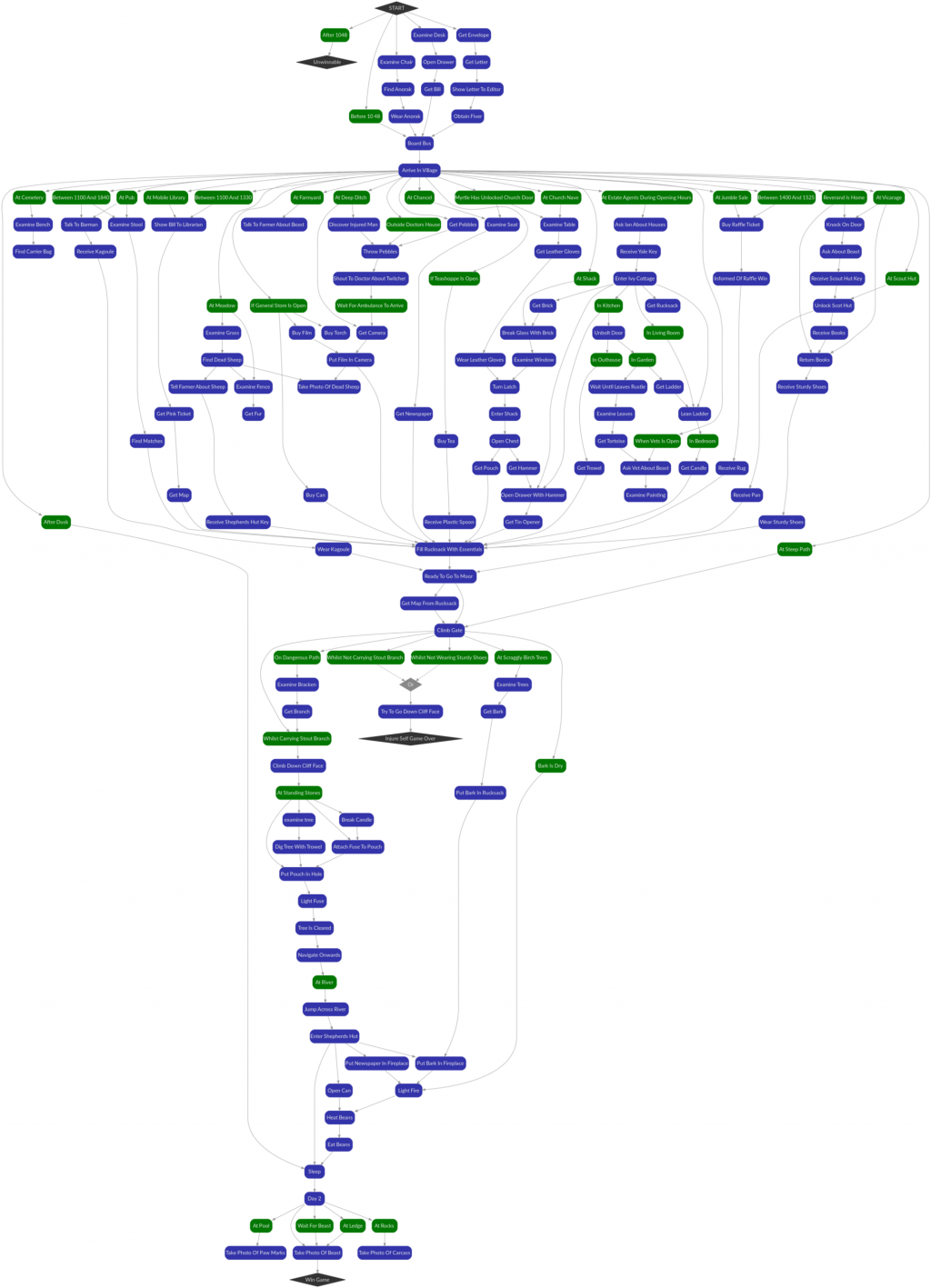Puzzlon
Puzzlon ( https://adventuron.io/puzzlon ) is a web based Puzzle Dependency Chart creation tool, written by Chris Ainsley.
Puzzle Dependency Charts
Puzzlon is directly inspired by Ron Gilbert's blog post on Puzzle Dependency Charts, and how they were used in the creation of Monkey Island.
The purpose of a puzzle dependency chart is to be able to visualise the dependencies of puzzles in a game for the purposes of working out bottlenecks, over-linearity, or over-non-linearity.
- A very linear game will have a long and narrow chart.
- A very non-linear game will have a wide chart.
- Where geography is important, conditions can be attached.
- Puzzle dependency charts are independent to the geography of your game.
- Colours can be used to represent different types of dependency.
A Minimal Example (The Cave of Magic)
Instructional Video
An instructional video is available on YouTube.
Types of Node
Puzzlon expands on Ron Gilbert's description of Puzzle dependency charts and utilizes 4 types of node.
- Action - An action is something the player must do. An action is the only active event that moves forward progress. All other types of node are passive (imply prior action).
- At - Similar to condition, but represents a location where an dependent action must be performed.
- Condition - A condition is something that must be passively true, but does not necessarily require a player action. A condition may be used to link together an action that happens somewhere else in the chart.
- Goal - A goal is a long term objective.
The Puzzlon Editor
- Puzzlon features a browser-based editor ( https://adventuron.io/puzzlon ), with autocompletion (using Control + Space) that visualises changes as they are typed.
- Puzzlon does not permit or require the layout of elements. Only the relationships between nodes are required. Layout is automatic.
- Puzzlon has the ability to export charts as SVG files.
- Only one file may be edited at a time, so copying and pasting to a local file is usually required if working with multiple files, or for backup purposes.
Visualising Your Game Design
A good puzzle-centric traditional text adventure game tends to have:
- A pre-game, a small self contained puzzle chart, that culminates in a single goal, which must be completed to move forward. This is useful to convey initial story and/or the mechanics of the game.
- A larger main-game, which has a wide chart. A wide chart suggests that a game has lots of objects that can be completed concurrently. This (generally speaking) is fun for the player.
- An optional endgame, the endgame tends to be smaller than the main game, and may be very linear. This is useful as a mechanism of finishing off the story.
(See 'The Beast' at the bottom of this page as an example of exactly this structure, see if you can identify the pre-game, main-game, and end-game segments).
The Beast of Torrack Moor Puzzle Dependency Chart (Spoilers Ahead)


